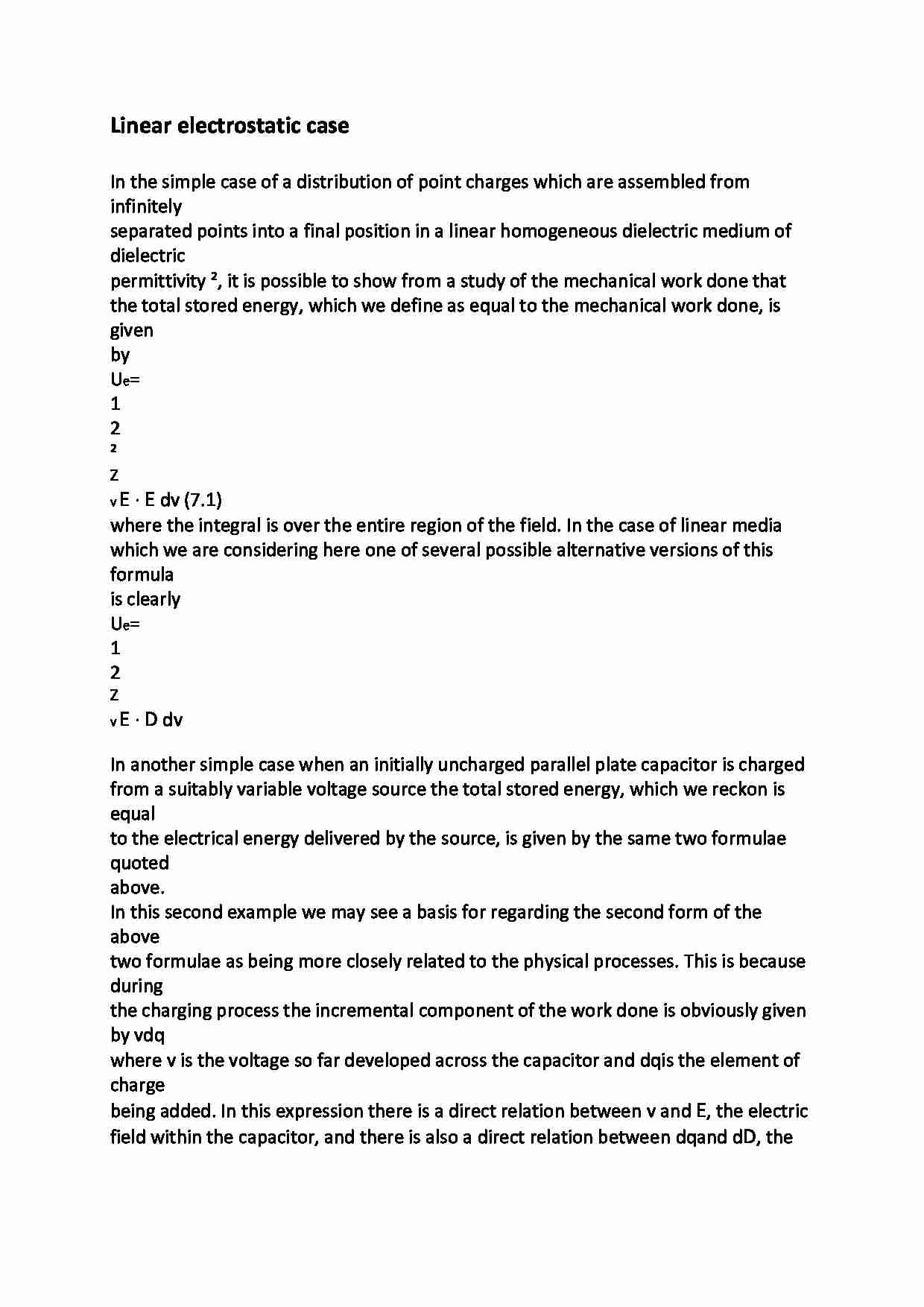To tylko jedna z 2 stron tej notatki. Zaloguj się aby zobaczyć ten dokument.
Zobacz
całą notatkę


Linear electrostatic case In the simple case of a distribution of point charges which are assembled from infinitely
separated points into a final position in a linear homogeneous dielectric medium of dielectric
permittivity ², it is possible to show from a study of the mechanical work done that
the total stored energy, which we define as equal to the mechanical work done, is given
by
Ue =
1
2
²
Z
v E · E dv (7.1)
where the integral is over the entire region of the field. In the case of linear media
which we are considering here one of several possible alternative versions of this formula
is clearly
Ue =
1
2
Z
v E · D dv
In another simple case when an initially uncharged parallel plate capacitor is charged
from a suitably variable voltage source the total stored energy, which we reckon is equal
to the electrical energy delivered by the source, is given by the same two formulae quoted
above.
In this second example we may see a basis for regarding the second form of the above
two formulae as being more closely related to the physical processes. This is because during
the charging process the incremental component of the work done is obviously given by vdq
where v is the voltage so far developed across the capacitor and dq is the element of charge
being added. In this expression there is a direct relation between v and E, the electric
field within the capacitor, and there is also a direct relation between dq and dD, the
change in electric flux density in the capacitor. Thus as far as the incremental component
of work done in this change, it seems that the most directly appropriate formula is
dUe =
Z
v E · dD dv (7.3)
rather than any alternative formula in which we might substitute for D in terms of
²E or for E in terms of D/². This argument, which might appear a little thin in the
linear dielectric case, becomes quite compelling in the non-linear dielectric case, where
such substitutions are not possible.
... zobacz całą notatkę




Komentarze użytkowników (0)